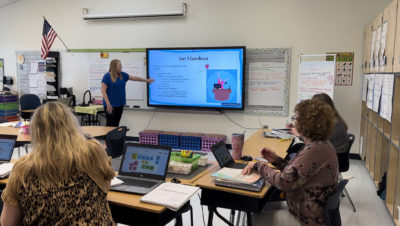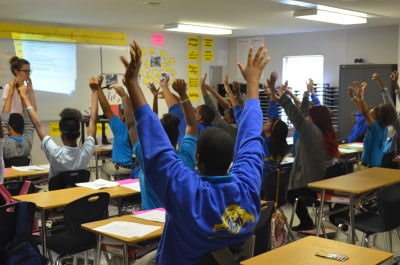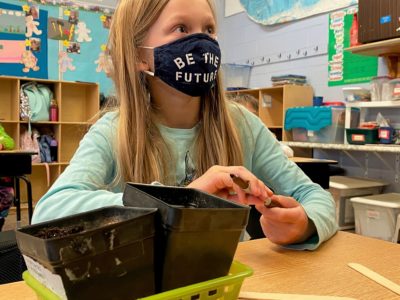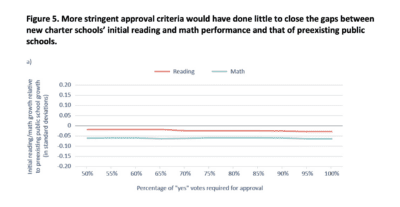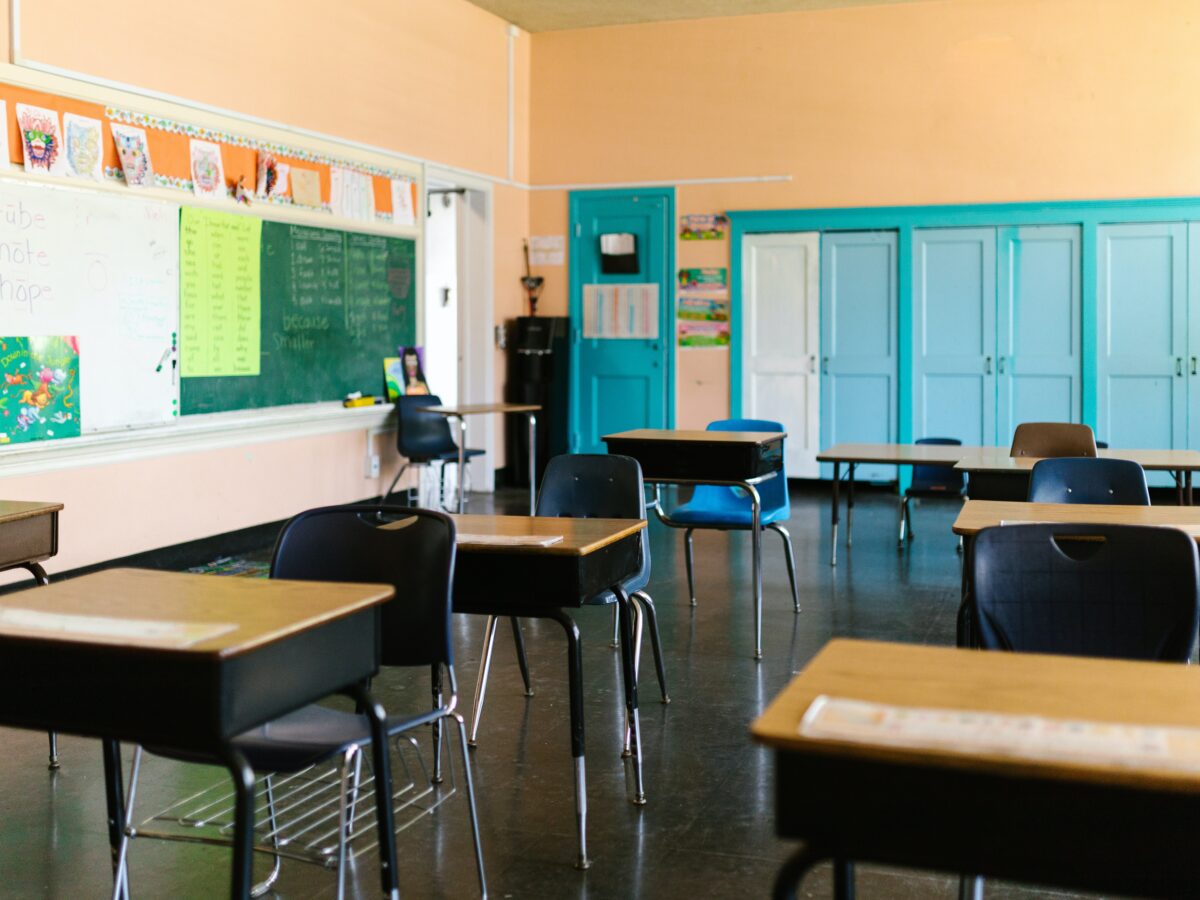

Share this story
- Ahead of the Sept. 30 deadline to spend federal Covid relief dollars, North Carolina school districts have an average of 10.5% of these funds remaining. On average, the remaining ESSER III balance per district is about $2 million. #nced
- The State Board of Education recently discussed several important items, including positive trends in literacy data. Mid-year testing data show that North Carolina K-3 students “again outpaced their peers on a national level,” DPI said. #nced
|
|
During the height of the pandemic, North Carolina received $3.6 billion in Elementary and Secondary Schools Emergency Relief (ESSER III) funds to address student academic, social, emotional, and mental health needs, on top of previous federal Covid relief dollars.
Ahead of the Sept. 30 deadline to spend those funds — known as “the funding cliff” — North Carolina school districts have an average of 10.5% of ESSER funds remaining, totaling $629,295,937, according to Department of Public Instruction (DPI) data presented to the State Board of Education on Wednesday.
On average, the remaining ESSER III balance across districts is approximately $2 million. The percentage of ESSER III funds spent by North Carolina districts ranges from nearly 59% to more than 99%. The DPI data, available online, is updated as of Feb. 29.
In February, DPI said it had approximately $4.6 million in unobligated ESSER III grants. Last month, the Board approved DPI’s request to put those funds toward approximately $5.5 million worth of items.
“Within the funds that we have under our purview to execute… (we want) to make sure that we’re maximizing those resources and getting them spent as efficiently as possible,” said Jennifer Bennett, senior director of DPI’s Office of School Business Services. “We also provide all of ESSER funding every month when we get expenditure data from the PSUs (public school units). We update that every month so everybody understands where we’re at at every point in this process.”
In February, presented a “ESSER Funding Cliff Toolkit” to state lawmakers to help districts with “data-driven financial decision making for post-ESSER spending.” You can read more about that toolkit here.
Take a look at DPI’s dashboard of ESSER III funds below. The table below shows the percentage of different Covid relief buckets that remain to be spent across the state.
To view the amount of funds spent per school district, select the “Summary and Allotment per ADM for Local Education Agency” tab.
The data is part of an annual report DPI must submit to the General Assembly.
That report notes that the U.S. Department of Education accepted and approved North Carolina’s state plan to spend federal Covid relief funds, “which included the appropriation plan and North Carolina’s plan for addressing and tracking the efforts of combating learning loss resulting from the COVID pandemic.”
States received three rounds of ESSER funding during the pandemic. The first round — roughly $13.2 billion — largely went toward personal protective equipment and devices for students to safely reopen schools. The second and third rounds — nearly $123 billion — were a little more flexible, but were intended to support academic and mental health at schools as they recovered from Covid.
On Wednesday, Bennett said the state was required to distribute 90% of ESSER funds directly to districts, with 10% appropriated by the General Assembly. The state has maintained that split “with fidelity,” she said.
As ESSER funding expires, school districts must decide what to prioritize moving forward. During the February presentation by DPI to lawmakers, DPI’s Deputy State Superintendent Dr. Michael Maher said DPI is still discussing how districts can “replenish technology as it becomes, in essence, out of date.”
Rep. John Torbett, R-Gaston, said at the time that good data will be key to good decisions moving forward.
“We’re going into post-Covid and those monies are running out,” Torbett said. “Hopefully, we have worked procedures out to help those agencies that used that money. For one time purposes should be okay, but there were some that have used the money for recurring expenses that we’ll be probably be hearing about in the days and weeks to come.”
The Board’s April 3-4 meeting included many other important items, including updates on teacher attrition, literacy data, Restart schools, and more. Stay tuned for EdNC’s report on attrition trends.
At the start of Wednesday’s meeting, Chair Eric Davis spoke about the importance of such work — and of public education.
“We must never give up, as some may want to do, on public schools. That’s a choice that we all have every day, especially as voters in this upcoming election,” Davis said. “I believe in our teachers and the terrific work they do every day. I believe in our students and their families, and the communities they come from. I believe in their public schools, because public schools matter.”
Mid-year literacy assessment data
More K-3 students are on track when it comes to gaining literacy skills, according to new DPI data presented to the Board on Wednesday. The 2023-24 school year marks the second full year of implementation of the Excellent Public Schools Act of 2021.
Mid-year testing data shows that North Carolina K-3 students “again outpaced their peers on a national level,” per the DPI press release. North Carolina kindergarteners improved by 22% from the beginning- to middle-year assessment, DPI said, while nationally the same age group improved by 13%.
State Superintendent Catherine Truitt praised the work educators learning and teaching the science of reading. All 115 school districts are expected to complete Language Essentials for Teachers of Reading and Spelling (LETRS) training by July, totaling 44,000 K-5 educators.
“Elementary educators have been putting the science of reading into practice throughout the past three years, and the results speak for themselves,” Truitt said. “This growth and continued progress is critical to ensuring our youngest learners are in the position to read, lead and succeed throughout their academic journey. Improving reading proficiency for students in North Carolina has been a priority for me since I stepped into office, and I’m so proud of what our students and educators have accomplished.”
Deputy State Superintendent Michael Maher previously said it is likely that the state will fully know results from these efforts when 2022-23 kindergarten students reach third grade — two school years from now.
In the meantime, the beginning of year (BOY) and middle of year (MOY) assessments can help individual schools – and the state as a whole – make sure they’re staying on track.
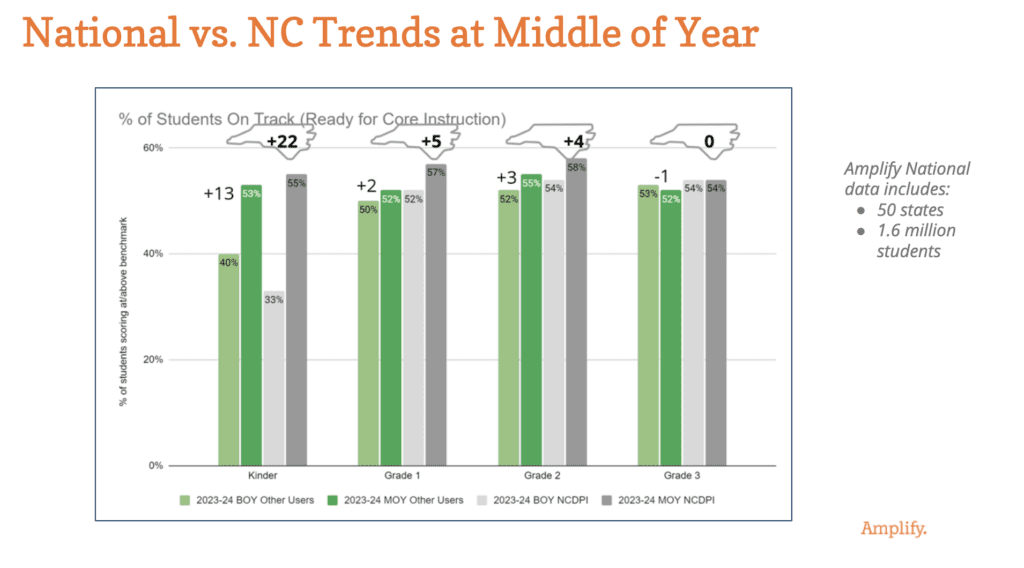

DPI’s presentation also shows that white, Asian, Black, Hispanic, and American Indian/Alaska Native students each saw growth from the start of the year, with white and Asian students showing the largest readiness rates.
“There is much to celebrate, between students’ continued growth and nearing LETRS’ full implementation,” said Amy Rhyne, DPI’s director of the Office of Early Learning. “But there is still work to be done to support all elementary students in their reading journey.”
The presentation did not include data on the number of K-3 students needing intensive intervention. Last April, third grade was the only to increase at a faster rate under that metric — by three percentage points in both North Carolina and in the national sample.
The presentation did include data on the number of students at or above benchmark. In 2021-22, 47% of students were at or above benchmark, compared to 56% at this mid-year assessment.
“From the beginning of the 2023-24 school year, there are over 20,000 fewer students below benchmark and more than 34,000 students at or above benchmark,” DPI’s press release says.
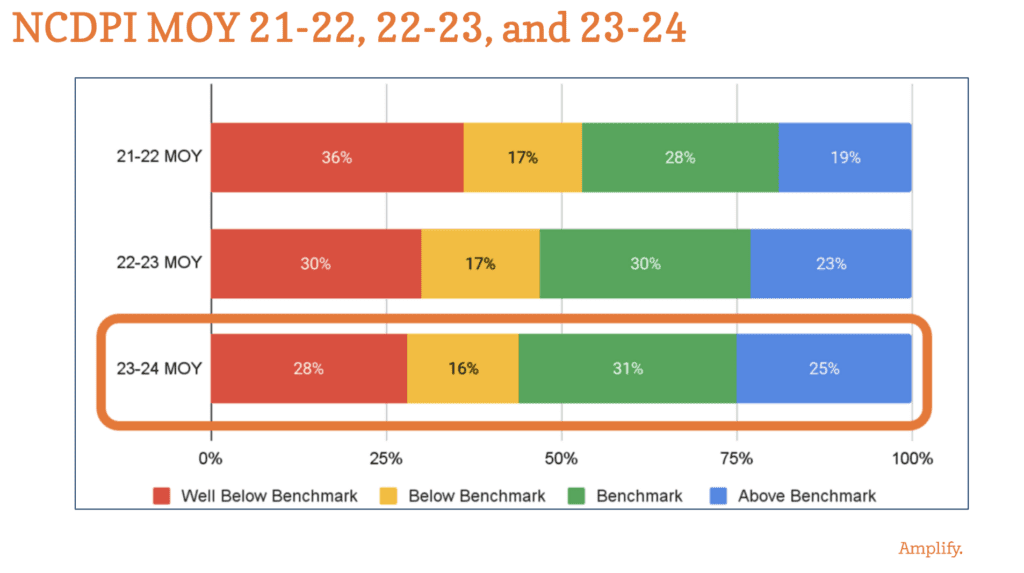

The state requires every teacher to administer the literacy assessment using Amplify’s mCLASS tool at least three times a year — once at the beginning, once in the middle, and once at the end of the year.
Since 2021, North Carolina has used the version of mCLASS with the Amplify DIBELS 8 Formative Reading Diagnostic Assessment — an updated tool that Amplify officials said aligns better with the science of reading. Amplify spokesperson Kay Moffett said mCLASS assessments provide teachers with data they can use to target instruction based on what reading skills students have or need to learn more fully. The assessment measures things like fluency with letters and phonemes (the sound segments that make up a word), and word reading fluency and vocabulary.
You can view DPI’s full presentation on mid-year assessment data here. You can also learn more about the science of reading and Amplify test in this EdNC article from last April.
On Thursday, the Board also received an early literacy update from DPI staff, along with local early literacy specialists.
The presentation includes an overview of DPI’s Office of Early Learning, North Carolina’s systems coaching literacy support model, perspectives from school districts, and more. You can view the presentation here.
On Thursday morning, the Board also recognized the following districts and schools as the first recipients of a Science of Reading Award. The recipients were also added to the DPI’s promising practices map for early literacy.
- North Central: Person County School District, True Trailblazer.
- Northeast: Bertie County School District, True Trailblazer.
- Northwest: Wilkes County School District, Innovative Inspiration.
- Piedmont Triad: Asheboro City Schools, True Trailblazer.
- Sandhills: Pinehurst Elementary School in Moore County Schools, True Trailblazer.
- Southeast: New Hanover School District, Champion for Change.
- Southwest: Mooresville Graded School District, Champion for Change.
- West: Hayesville Primary School in Clay County Schools, Champion for Change.
A look at Restart schools
In North Carolina, the Restart model is one of four reform options available to public school districts to “support the reform of any school designated as Recurring Low Performing.” The first Restart cohort launched in 2017-18.
You can learn more about those reform models in state statute.
The Restart models allows eligible schools “the use of Restart flexibility to remove barriers to academic achievement,” according to DPI’s website. Among other things, Restart schools receive support from DPI’s Strategic Reform Team, within the Office of District and Regional Support.
Low-performing schools that are allowed by the state board to operate under the restart model are granted the same kind of flexibilities with statutes and rules as the state’s charter schools. Eligible schools are those that have been designated as “recurring low performing,” meaning that they received a school performance grade of D or F and didn’t exceed growth targets under the state’s accountability system in two of three consecutive years.
Excerpt from a Sept. 2023 press release from the State Board of Education
To date, the Board has approved 158 Restart schools, according to DPI data presented on Wednesday.
The Board discussed on Thursday 23 new applications across seven districts. If those applications are approved, there will be 181 total schools approved as Restart schools.
The Board also discussed authorization recommendations for the first cohort of Restart schools, which you can view here. The Board’s education innovation and charter schools committee recommended continued authorization for 40 schools, and for 13 schools to re-apply for authorization. Additionally, two schools have requested exit applications. The Board is set to vote on those items next month.
In September, Board Chair Davis said he wanted more detailed information about how Restart schools are using their flexibility. Eligible rules and policies include areas such as budgeting, employment requirements, calendar, Standard Course of Study and curriculum, assessment, and class size.
“It’s not just whether they used flexibilities, but how are they using them, and how is that having the greatest impact on students?” Davis said. “How are school leaders who are taking advantage of these flexibilities turning them into positive impacts for our students, and how are those schools that aren’t able to raise performance using those flexibilities?”
On Wednesday, the Board heard a presentation regarding such Restart pathways of flexibility.
During the 2022-2023 school year, 148 Restart schools identified 339 goals supported by 629 total flexibilities, according to the presentation. The most common pathways use budget flexibility in support of student performance by providing: additional staff/flexible staffing, instructional resources/programs, and professional development.
“‘Effective’ Restart schools use budget and employment requirement flexibilities to provide resources that may increase instructional quality in support of student performance,” the presentation says.
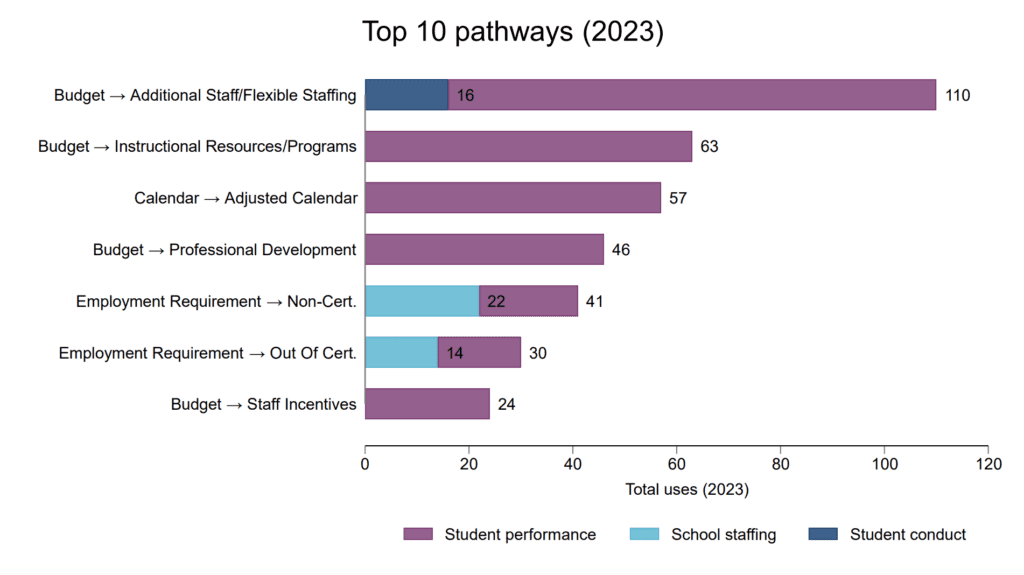

Charter school updates, and new EPP applications
Following legislative changes included in the budget, the Board has been working to update its policy on charter renewals. Under the new law, the former Charter Schools Advisory Board was replaced by the Charter Schools Review Board (CSRB), which now has sole authority to approve, deny, or renew charter applications. The State Board of Education can appeal decisions by the CSRB.
On Thursday, the Board approved its updated charter renewal policy, which you can read here. Most of the changes include updated language surrounding the charter boards.
“We believe these proposed revisions make for improved policy,” said John Blackburn, Board member and chair of the Education Innovation and Charter Schools Committee. “But we also have to uphold our constitutional duty.”
Blackburn recommended the Board approve the policy with an amendment that requires charter schools to meet State Board guidelines in order to be renewed by the CSRB, barring”exceptional circumstances.”
“The state’s constitution rests the duty of overseeing public education with this Board,” Blackburn said. “In order to uphold that duty, this Board’s guidelines should be allowed unless a decision-making body, the CSRB, believes there are exceptional circumstances.”
The amended policy was approved 6-4.
Under the new law, charter schools can appeal decisions made by the CSRB to the full Board. On Thursday, the Board voted to not approve the charter renewal appeal from Ridgeview Charter School.
Ashley Baquero, executive director of DPI’s Office of Charter Schools, said there were originally 12 charter schools set to open in the fall. That number is now at five, with two additional schools expected to request a delay next week.
“So best case scenario, we will have three schools opening in the fall,” Baquero said.
On Thursday, the Board also approved two Educator Preparation Program (EPP) programs: Moreland University and KIPP North Carolina.
The Board first discussed those applications at its Jan. 31-Feb. 1 meeting, but voted to wait to vote on the programs. At the time, members said the Board wanted to work with DPI to establish more guidance on what contributes to a strong EPP program.
At the Board’s Jan. 31 meeting, Board member Olivia Oxendine raised concerns about language concerning white supremacy in KIPP’s application. Oxendine expressed concern with one of the school’s five “key principles of teaching and learning,” pasted below.
“All teachers, leaders, and coaches consistently interrupt their implicit bias, actively dismantle white supremacy culture, disrupt anti-Blackness in their pedagogy and coaching, create a space grounded in humanity, and honor the whole child.”
Excerpt from KIPP application materials
KIPP sent a response to Board members on Jan. 31 concerning Oxendine’s questions.
This passage does not imply any intent by KIPP North Carolina to use Critical Race Theory as a pedagogy for training teachers in our licensure program. The inclusion of this passage has nothing to do with the curricula teachers will teach in their classrooms. As our application demonstrates, teachers will spend most of their time in our EPP learning about foundational literacy skills (including being enrolled in LETRS programming), reading comprehension, and math content in order to implement KIPP NC’s Tier 1, research-based, science-of-learning-informed curricula that drive our daily reading and math instruction.
…
Our naming of white supremacy culture acknowledges the many historical inequities that KIPP NC has been working for decades to address in our state’s public school system. We do this work in response to our state’s unacceptable 30-point achievement gap between our Black students and their white peers. We absolutely want our teachers equipped with the knowledge of those inequities and that gap so they can address them and do the very difficult work of preparing the students in their care with the skills and confidence to pursue the paths they choose—college, career, and beyond so they can lead fulfilling lives and build a more just world.
Excerpt from KIPP letter to State Board
Oxendine said she appreciated KIPP’s explanation, but her “concerns still exist.” She voted against the program becoming an EPP, along with Wendell Hall, Treasurer Dale Falwell, and Lt. Gov. Mark Robinson.
The Board voted 6-4 to approve KIPP’s program.
Regional directors, State Advisory Council on Indian Education, and more
- DPI presented on the state’s Regional Directors System, which was launched in March 2019. “The Regional Director team develops and aligns systems, processes, and procedures to provide a unified system of statewide support to North Carolina Local School Administrative Units (LEAs),” the presentation says. “The regional support structure organizes services to schools and districts through an efficient geographically based model. The Regional Director leads the support and services provided in each region. The director facilitates and participates in the design, implementation, and evaluation of all services and school improvement practices for North Carolina districts and schools.”
- The Board discussed the 2023 State Advisory Council on Indian Education (SACIE) Annual Report. The report includes 2022-23 data on End of Grade (EOG) scores in reading, math, and science; End of Course (EOC) scores in Biology, English I, and Math I; and graduation, dropout, and suspensions data. The data shows a consistent achievement gap between American Indian and white students.
- The Board approved an amendment to its policy, Organization and Administrative Structure of Governor’s School. You can view that updated policy here.
- The 2023 state budget included $1 million each year of the biennium to support districts in developing comprehensive plans for health careers for high school students and their families. The maximum grant allowed is $25,000. Per DPI’s recommendation, the Board approved grant awards of $657,875 for this cycle, to 33 districts. Another cycle will take place in June.
- The state budget allocated $1 million from ESSER III funds to continue the Educational and Competitive After-School Robotics Grant Program during the 2023-2024 school year. DPI received 46 applications totaling $2.1 million in requests. In February, the Board approved 22 of those applications, “potentially reaching as many as 1,900 students,” per DPI materials. On Thursday, the Board approved the funding requests from the remaining 23 districts, totaling more than $1.2 million.
The full Board meets next April 30-May 2 for its biannual planning and work session in Boone.





